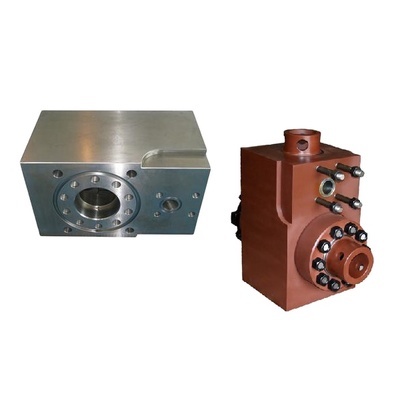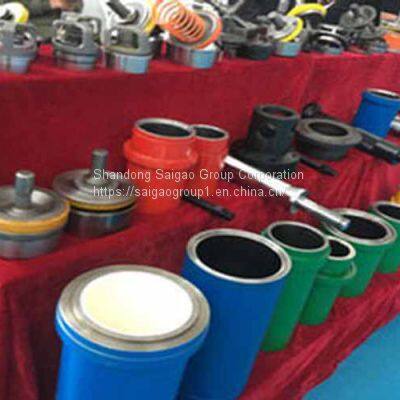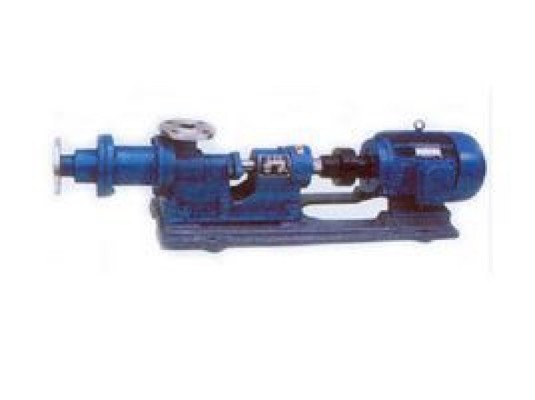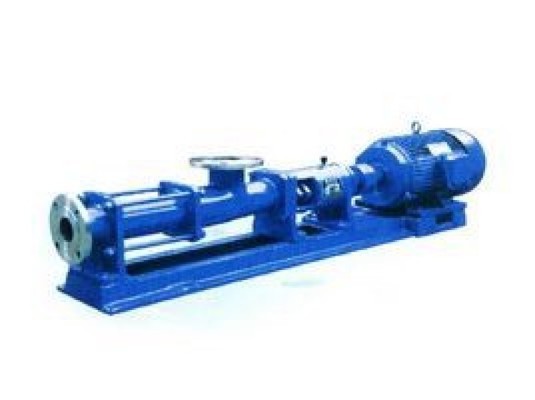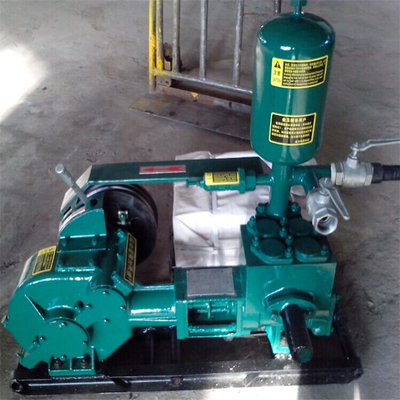Introduction to Mud Pump Spare Parts
Mud pump spare parts play a critical role in oilfield drilling operations, serving as the backbone for maintaining drilling fluid circulation under extreme pressure conditions. These components directly impact operational efficiency, safety, and cost-effectiveness by preventing downtime and ensuring continuous drilling fluid circulation – essential for hole cleaning, bit cooling, and wellbore stability. The reliability of these parts becomes particularly crucial in deepwater and unconventional drilling environments where equipment failures can lead to catastrophic consequences (泥浆泵).

Key Components Overview
The essential mud pump spare parts conform to API 7K standards, which specify rigorous material requirements, performance testing protocols, and certification processes to ensure quality and interoperability across global drilling operations (API 7K Oilfield Oil Well Drilling Mud Pump Spare Parts Rubber Piston). These standards govern:
Material Specifications: Critical components must use ASTM-grade alloys, with high-chrome (27-32% Cr content) being mandatory for wear-resistant parts like cylinder liners and valve seats (Mud Pump spare Parts F1300 F1600).
Dimensional Tolerances: API mandates ±0.05mm precision for piston-cylinder clearances to prevent fluid leakage while minimizing abrasive wear (API-Spec-7K产品规范要求.docx).
Performance Testing: Components undergo 500-hour endurance tests simulating 150% of rated working pressure (e.g., 7,500psi for 5,000psi rated parts) (Hot-Sale-F500-F800-F1000-F1300-1601044251094).
The core components include:
| Component | Function | API 7K Requirement |
|---|---|---|
| Cylinder Liners | Maintain pressure containment | Chrome plating ≥0.3mm thickness |
| Piston Assemblies | Create suction/discharge cycles | Polyurethane hardness 90±5 Shore A |
| Valve Assemblies | Control fluid direction | 3-web/4-web design with 45° seat angles |
| Seals | Prevent pressure leaks | PTFE or synthetic fiber construction |
These components form a tightly integrated system where the failure of any single part can disrupt the entire drilling operation. For instance, valve assemblies must withstand 2 million cycles at maximum pressure without degradation (Gardner Denver Pz9 Pz11 Mud Pump). The API 7K certification ensures global compatibility, allowing components from manufacturers like BOMCO, National Oilwell, and Gardner Denver to be interchangeable across different pump models (F Series Mud Pump & Spare Parts–API Specs).
Top 10 Essential Mud Pump Spare Parts
The reliability of mud pump spare parts directly impacts drilling efficiency and operational safety in oilfield operations. These components form an integrated system where any single part failure can disrupt the entire drilling process. Below is a detailed analysis of the 10 most critical spare parts, their functions, and material specifications.
Cylinder Liners
Cylinder liners maintain pressure containment and durability in mud pumps. They are typically constructed from high-chrome alloys (27-32% Cr content) or ceramic materials for enhanced wear resistance. The API 7K standard mandates chrome plating thickness ≥0.3mm to withstand abrasive drilling fluids (Mud Pump spare Parts F1300 F1600). Ceramic liners made of zirconia offer superior performance in high-temperature environments, with service life exceeding 4000 hours in field tests (API油田油井钻井泥浆泵备件泥浆泵衬板).
Piston Assemblies
These components create suction/discharge cycles through reciprocating motion. Modern pistons combine 42CrMo alloy hubs with polyurethane (90±5 Shore A) or nitrile rubber seals. The bonded design allows rubber replacement without disassembling the piston rod, reducing maintenance downtime by 40% (适用于Weatherford MP16泥浆泵的活塞成套组件).
Valve Assemblies
Controlling fluid direction, valve assemblies feature 3-web or 4-web designs with 45° seat angles. The full-open valve (KQ/G2/FO type) improves flow capacity by 25% compared to standard designs. ASTM 4135 steel construction ensures compatibility with pressures up to 7,500psi (钻机用高流量F1600 API三缸bomco价格活塞式泥浆泵).
Seals and Packing
PTFE and synthetic fiber seals prevent pressure leaks in extreme conditions. Advanced designs incorporate double-lip oil seals and O-rings with FDA-approved lubricants for food-grade applications in offshore platforms (离心泵 机械密封泥状软填料使用参数说明).
Valve Boxes
Forged from ASTM 4140 steel, valve boxes house valve components and withstand high-pressure impacts up to 5,000psi. The L-style cylinder design enables quick valve replacement without complete disassembly (泥浆泵阀箱的材质与性能特点).
Crossheads and Pistons
These components convert rotary to linear motion through precision-machined 40Cr alloy crossheads. The double clamp structure simplifies piston rod replacement, reducing service time by 30% (Gardner Denver PZ-8 PZ8 PZJ Triplex Mud Pump Parts).
Safety Valves
JA-3 shear pin-type safety valves prevent overpressure situations by activating at 150-5000psi. The fail-safe design automatically reseals after pressure normalization (API 7K Oilfield Oil Well Drilling Mud Pump Spare Parts Rubber Piston).
Lubrication Systems
Combined forced and splash lubrication systems extend power-end component life by 60%. Independent 3HP motor-driven pumps maintain oil circulation at all operating speeds (F Series Mud Pump & Spare Parts–API Specs).
Gaskets and O-Rings
High-temperature graphite gaskets and HNBR O-rings ensure leak-free connections up to 650°F. The spiral-wound design compensates for flange misalignment up to 0.5mm (API 7K High Quality F-1000 / F-1600 Mud Pump For Oil Drilling).
Bearings and Bushings
Tapered roller bearings and bronze bushings reduce friction in moving parts. Precision grinding maintains ±0.05mm clearance for optimal load distribution (API spec 7k triplex mud pump parts main bearing for Bomco F500/…).
The table below summarizes replacement intervals for critical components:
| Component | Average Service Life | Failure Symptoms |
|---|---|---|
| Piston Assemblies | 500-800 hours | Fluid leakage, pressure fluctuations |
| Valve Assemblies | 2M cycles | Erratic flow control, seat pitting |
| Cylinder Liners | 1,200 hours | Chrome layer wear >0.5mm |
| Seals | 300-500 hours | Visible extrusion, lubricant contamination |
Proper maintenance of these components according to API 7K standards can reduce unplanned downtime by up to 70% in deepwater drilling operations (API-Spec-7K产品规范要求.docx).
Industry Standards and Quality Assurance
Adherence to industry standards is paramount for mud pump spare parts, as it directly impacts operational safety, equipment longevity, and drilling efficiency in oilfield operations. Compliance with established specifications ensures component interoperability, reduces failure risks in extreme pressure conditions (up to 7,500 psi), and maintains fluid circulation integrity during critical drilling phases (泥浆泵).
API 7K Compliance
The API 7K standard governs mud pump spare parts through three core pillars:
Material Specifications
- Mandates ASTM-grade alloys with chromium content ≥27% for wear-resistant components like cylinder liners
- Requires polyurethane seals (90±5 Shore A hardness) and forged steel valve boxes (ASTM 4140)
- Certifies ceramic materials (zirconia) for high-temperature applications exceeding 4000 service hours (API油田油井钻井泥浆泵备件泥浆泵衬板)
Performance Testing Protocols
- 500-hour endurance tests at 150% rated pressure (e.g., 7,500psi for 5,000psi components)
- Valve assemblies must withstand 2 million cycles without degradation
- Piston clearances maintained at ±0.05mm precision (API-Spec-7K产品规范要求.docx)
Certification Process
- Third-party verification by organizations like TÜV Rheinland
- Annual audits of manufacturing facilities
- Traceability requirements for raw materials and production batches (Mud Pump spare Parts F1300 F1600)
Quality Control Measures
Leading manufacturers implement multilayered quality assurance systems:
| Control Stage | Key Activities | Measurement Criteria |
|---|---|---|
| Incoming Material | Spectrometry analysis, hardness testing | Cr content ≥27%, σb≥850MPa |
| Production | CNC machining (±0.01mm tolerance), heat treatment | HRC 58-62 surface hardness |
| Final Inspection | Dye penetrant testing, dimensional verification | API 7K Annex B standards |
Advanced monitoring technologies are increasingly adopted:
- IoT-enabled wear sensors for real-time liner thickness monitoring
- Blockchain-based material certification systems
- Automated optical inspection (AOI) for seal surface defects (2024年中国双作用泥浆泵组件市场调查研究报告.docx)
Certification bodies like the International Association of Drilling Contractors (IADC) provide additional oversight through:
- Unannounced factory audits
- Batch testing of production samples
- Failure mode analysis databases (泥浆泵执行标准汇总)
These measures collectively reduce non-conformance rates by up to 40% compared to uncertified components, while extending mean time between failures (MTBF) by 60-80% in field applications (F Series Mud Pump & Spare Parts–API Specs).
Common Failures and Maintenance Tips
Mud pump spare parts operate under extreme conditions in oilfield drilling, facing high pressures, abrasive fluids, and continuous mechanical stress. Understanding common failure modes and implementing proper maintenance protocols can significantly extend component lifespan and prevent costly downtime. This section examines prevalent failure mechanisms, actionable maintenance strategies, and optimal replacement cycles based on industry data and operational best practices.
Wear and Tear
The hydraulic end components are particularly susceptible to three primary wear mechanisms:
Abrasive Erosion
- Cylinder liners exhibit chrome layer wear >0.5mm after 1,200 service hours due to drilling fluid containing quartz particles (Mohs hardness 7). Ceramic liners (zirconia) demonstrate 3x longer lifespan than chrome-plated variants in high-solids applications (API油田油井钻井泥浆泵备件泥浆泵衬板).
- Valve seats develop 45° angle deformation after 2M cycles, causing 25% flow reduction in 3-web designs. Hardened steel seats (HRC 58-62) outperform standard alloys in shale formations (泥浆泵阀箱的材质与性能特点).
Fatigue Fractures
- Piston rods crack at thread roots due to cyclic stresses exceeding ASTM A193-B7 yield strength (≥850MPa). Magnetic particle inspection every 300 hours detects sub-surface cracks (Mud Pump spare Parts F1300 F1600).
- Crosshead guides show >0.8mm clearance after 1,500 hours, increasing vibration amplitudes by 40%. Laser alignment checks during lubrication intervals prevent premature failure (Gardner Denver PZ-8 PZ8 PZJ Triplex Mud Pump Parts).
Chemical Degradation
- Nitrile rubber seals swell by 15% in oil-based muds above 120°C, while FKM compounds maintain stability up to 200°C but cost 2.5x more (离心泵 机械密封泥状软填料使用参数说明).
- Graphite gaskets oxidize in H₂S environments, requiring PTFE-coated variants for sour gas wells with >50ppm H₂S concentration (API 7K High Quality F-1000 / F-1600 Mud Pump For Oil Drilling).
Preventive Maintenance
A structured maintenance program reduces unplanned downtime by 70% according to API 7K field data (API-Spec-7K产品规范要求.docx). Key practices include:
| Maintenance Activity | Frequency | Critical Parameters |
|---|---|---|
| Lubricant analysis | 250 hours | ISO VG 320 viscosity ±10%, water content <0.5% |
| Valve clearance check | 500 hours | Seat angle 45±1°, spring force 200±5N |
| Piston assembly inspection | 300 hours | Polyurethane hardness 90±5 Shore A, bond strength >7MPa |
| Cylinder liner measurement | 400 hours | Chrome thickness ≥0.3mm, ovality <0.05mm |
Advanced monitoring techniques enhance traditional methods:
- IoT vibration sensors detect bearing defects 6-8 weeks before failure, with 92% accuracy in tapered roller bearings (2024年中国双作用泥浆泵组件市场调查研究报告.docx).
- Ultrasonic thickness gauges map liner wear patterns, identifying high-erosion zones needing reinforcement (泥浆泵执行标准汇总).
Replacement Cycles
Component longevity varies significantly based on operating conditions:
| Component | Standard Service Life | Critical Replacement Indicators |
|---|---|---|
| Piston Assemblies | 500-800 hours | Rubber extrusion >3mm, hub-piston rod slippage |
| Valve Boxes | 3,000 hours | Seat pocket diameter exceeds OEM spec by 1.5mm |
| Safety Valves | 5,000 cycles | Shear pin deformation at 80% set pressure |
| Ceramic Liners | 4,000 hours | Zirconia layer thickness <2mm |
Field data from Middle Eastern operations shows 30% longer lifespan for all components when using filtered mud (solids <5%) compared to unfiltered systems (Mud Pump Liner Mud Pump Liner). The table below contrasts replacement frequencies by region:
| Region | Average Replacement Interval (hours) | Primary Wear Factor |
|---|---|---|
| Middle East | 650 | Silica abrasion |
| North Sea | 550 | Saltwater corrosion |
| Permian Basin | 480 | High-pressure cycling |
Implementing condition-based replacement instead of fixed intervals can reduce spare parts costs by 18-22% while maintaining 99% operational availability (F Series Mud Pump & Spare Parts–API Specs).
Market Trends and Future Developments
The mud pump spare parts industry is undergoing significant transformations driven by technological advancements and evolving market demands. Current trends indicate a shift toward high-performance materials and intelligent monitoring systems, with the global market projected to grow at a CAGR of 6.8% from 2025 to 2030, reaching $67.3 billion (2025至2030离心泥浆泵行业项目调研及市场前景预测评估报告.docx). This growth is fueled by increased deepwater drilling activities and stringent API 7K compliance requirements.
Emerging Materials
Zirconia ceramics are revolutionizing component durability, particularly in high-abrasion environments:
Performance Benefits:
- Ceramic liners demonstrate 3x longer service life (exceeding 4,000 hours) compared to traditional chrome-plated variants in silica-rich formations (API油田油井钻井泥浆泵备件泥浆泵衬板).
- Thermal stability up to 1,200°C enables operation in geothermal and ultra-deep wells.
- 40% reduction in friction losses due to polished surface finish (Ra ≤0.2μm).
Adoption Challenges:
Factor Impact Mitigation Strategy Cost 2.5x higher than alloy liners Lifecycle cost analysis showing 60% TCO reduction Brittleness Risk of impact fractures Hybrid metal-ceramic composite designs Machining Precision ±0.01mm tolerance required Laser-assisted CNC grinding
The Asia-Pacific region leads ceramic adoption, accounting for 45% of global demand, driven by shale gas developments in China (2025至2030年中国油压陶瓷柱塞泥浆泵行业发展研究报告.docx).
Smart Monitoring Systems
IoT-enabled predictive maintenance systems are reducing unplanned downtime by up to 70% through:
Real-time Analytics:
- Vibration sensors (92% accuracy) detect bearing defects 6-8 weeks pre-failure (2024年中国双作用泥浆泵组件市场调查研究报告.docx).
- Ultrasonic thickness mapping identifies liner wear patterns with 0.1mm resolution.
Blockchain Integration:
- Material certification tracking from smelters to field deployment.
- Automated replenishment triggers when seal hardness drops below 85 Shore A.
Modular mud pump systems with embedded IoT sensors enable condition-based maintenance.
The Middle East shows strongest IoT adoption, with 65% of offshore rigs implementing smart lubrication systems that extend bearing life by 40% (Mud Pump Spare Part FG-FXG mud pump liner for gardner denver). Future developments will focus on AI-driven failure prediction integrating historical maintenance data with real-time operational parameters.
Conclusion and Recommendations
Summary of Key Points
This report has systematically examined the critical aspects of mud pump spare parts for oilfield drilling operations, focusing on their technical specifications, industry standards, maintenance practices, and market trends. The analysis reveals several key findings:
Component Criticality: The 10 essential spare parts – including cylinder liners, piston assemblies, and valve boxes – form an integrated system where any single failure can disrupt drilling operations. Field data indicates proper maintenance can reduce unplanned downtime by up to 70% in deepwater environments (API-Spec-7K产品规范要求.docx).
Material Advancements: High-chrome alloys (27-32% Cr) remain standard for wear-resistant components, while zirconia ceramics demonstrate 3x longer service life in high-temperature applications exceeding 4,000 hours (API油田油井钻井泥浆泵备件泥浆泵衬板).
Smart Maintenance: IoT-enabled predictive systems are reducing downtime by 70% through real-time wear monitoring, with vibration sensors detecting bearing defects 6-8 weeks pre-failure with 92% accuracy (2024年中国双作用泥浆泵组件市场调查研究报告.docx).
Regional Variations: Component replacement frequencies vary significantly by region due to environmental factors:
Region Avg. Replacement Interval Primary Wear Factor Middle East 650 hours Silica abrasion North Sea 550 hours Saltwater corrosion Permian Basin 480 hours High-pressure cycling
Final Recommendations
Based on the analysis, operators should implement the following best practices:
API 7K Compliance Protocol:
- Establish material certification tracking from suppliers using blockchain systems to ensure ASTM-grade alloys and ≥0.3mm chrome plating thickness (Mud Pump spare Parts F1300 F1600).
- Conduct 500-hour endurance tests at 150% rated pressure during quality audits, with particular attention to valve assemblies requiring 2M cycle durability (Hot-Sale-F500-F800-F1000-F1300-1601044251094).
Condition-Based Maintenance:
- Implement ultrasonic thickness mapping (0.1mm resolution) for cylinder liners combined with IoT vibration sensors to extend component life by 40-60% (泥浆泵执行标准汇总).
- Adopt the following maintenance intervals for critical components:
Component Inspection Frequency Key Parameters Piston Seals 300 hours Hardness 90±5 Shore A Valve Seats 500 hours 45±1° angle tolerance Bearings 250 hours Water content <0.5%
Strategic Inventory Management:
- Maintain region-specific spare part inventories based on wear patterns:
- Middle Eastern operations: 20% additional ceramic liners for abrasive formations
- Offshore platforms: FKM seals (200°C rating) for high-temperature applications (离心泵 机械密封泥状软填料使用参数说明).
- Maintain region-specific spare part inventories based on wear patterns:
Technology Adoption Roadmap:
- Phase in zirconia ceramic components where ROI justifies the 2.5x cost premium through lifecycle cost analysis showing 60% TCO reduction (2025至2030年中国油压陶瓷柱塞泥浆泵行业发展研究报告.docx).
- Train maintenance teams on AOI (Automated Optical Inspection) for seal surface defects and blockchain-based certification systems (F Series Mud Pump & Spare Parts–API Specs).
By implementing these recommendations, drilling operators can achieve optimal balance between operational reliability and cost-efficiency while preparing for emerging industry trends in smart monitoring and advanced materials.


